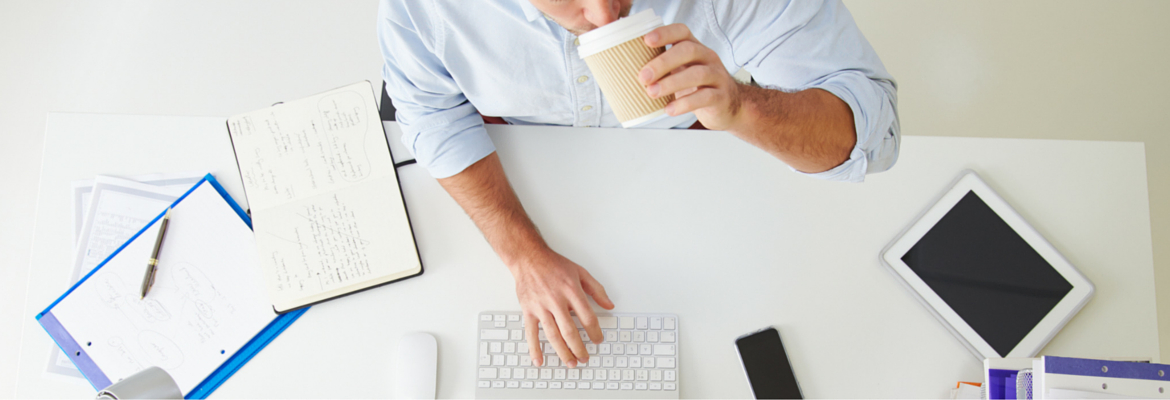
Being a consultant is no easy job, especially if you work from home. Between clients, family, and a whole host of social media sites just a browser tab away, it’s fairly easy to get interrupted and fall into a pattern where you can’t stay productive and be consistent. There’s no silver bullet to fix this and everybody else’s brain works a little differently, but here are a few tips that can make everyone’s life (including you, your teammates and clients) a lot easier and more productive.
1. Build in Breaks
The secret sauce to being super productive is…. to browse Facebook every once in a while. I know, we’re not being paid to post cat pictures. However, we’re paid to be productive and on top of our game, and you can’t do that if your brain is fried. It has been scientifically proven that the brain’s functions decline after a couple of hours of sustained concentration. For some people it’s a lot less than that. The key is to find out how long you can stay productive without affecting your effectiveness. That number, for me, is somewhere between 30-45 minutes. 90 minutes if I am in a super complicated/fun/stubborn problem. After that I stop, take 5 minutes (or 10) to browse FB, talk to the family in the house, walk for a bit. grab a snack (why not?) and clear my mind. It’s incredible how much better I can concentrate when I come back.
2. Stay on top of your email/IMs… but not too much
Emails and IMs are the worst offenders. Slack, Hangouts, and client emails are always clamoring for our attention. Usually, we have two types of people. The Hyperactives that take 30 seconds to answer everything and obsessively check their IMs, and the Procrastinators who have thousands of unread emails and check things daily (or more).
There is a sweet spot in between, and that depends on you. Schedule 15 minute email/IM sessions either before or after your breaks (see previous section). That will help you either wind down or come back into the game and help you stay connected. Normally, I mute all things that invoke Pavlovian responses (all dings, beeps and “ta-da”s) and only leave on those on private IMs or those that mention me specifically. That way I can react quickly to things that need my immediate attention (like a direct message) but otherwise remain undisturbed to do what I do best.
The only caveat here is this, communicate with your team about your habits and let them know how to get your attention if they need it. That way you won’t have people asking you an urgent question via email (which you’re not checking) and instead will reach you via Direct Message.
3. Multitask smartly
Doing (or, rather, trying to do) multiple things at the same time is usually a losing proposition. Unless you’re an octopus/fly (octofly?) combination, you’ve only got two hands to put on a keyboard at once and one pair of eyes to look at a monitor. What this really means is that doing two things simultaneously most of the time means not doing either particularly well.
However, if you’re smart about it, you can do it effectively. Look for built-in downtime in your daily tasks. Is your code building for 10-15 minutes? Are you uploading/downloading large files that take a while? Are you running some long processes? All of those offer a possibility to multitask smartly.
Fire off that email response. Tackle that other project’s 5-minute task that you’ve been postponing since this morning. Make that quick phone call to a client. Then get back on the saddle and continue your main task.
4. Schedule time for yourself
One of my largest pet peeves is when I have meetings sprinkled throughout the day, leaving 15-30 minute intervals in between. That means that I feel so unproductive because I can seldom get anything accomplished in that size of time. However, if the calendar is open, you can bet that somebody will use that empty time to meet with you.
If you’re like me…. block yourself. Grab a 2-3 hour chunk of time and book it. Then you know you can work unbothered for some time. The time of the day where this block is placed is up to you. Take into account your client/team preferred meeting times, but also take into account your own productivity patterns. I concentrate better in the mornings, so I need my afternoons blocked because I need extra TLC to get going…. you get the point.
5. Procrastinate in reverse
Lastly, I left what I think is my most effective tool. We all have tasks we hate to do. You know what those are. The solution is simple. Do. Them. First. Always.
When I do what I hate to do first, I achieve two things. First, I take care of the bad part of the day and can move on. Second, I have a better outlook on what I have to do because I no longer have that hated “Damocles Sword” hanging over me; where I constantly dread the moment I have to do the hated chore. Since I adopted this practice, I’ve noticed my stress levels have gone down and I have more fun doing my job.
Final thoughts
As we’ve covered in this article, there are many things you can do to make your workday more productive Some of them take more commitment, some are quick tweaks. While not all may fit your work style, I encourage you to try a few of these tips. We can always learn new tricks! Next week look for my second post, sharing tools that help maximize your interactions with others.

